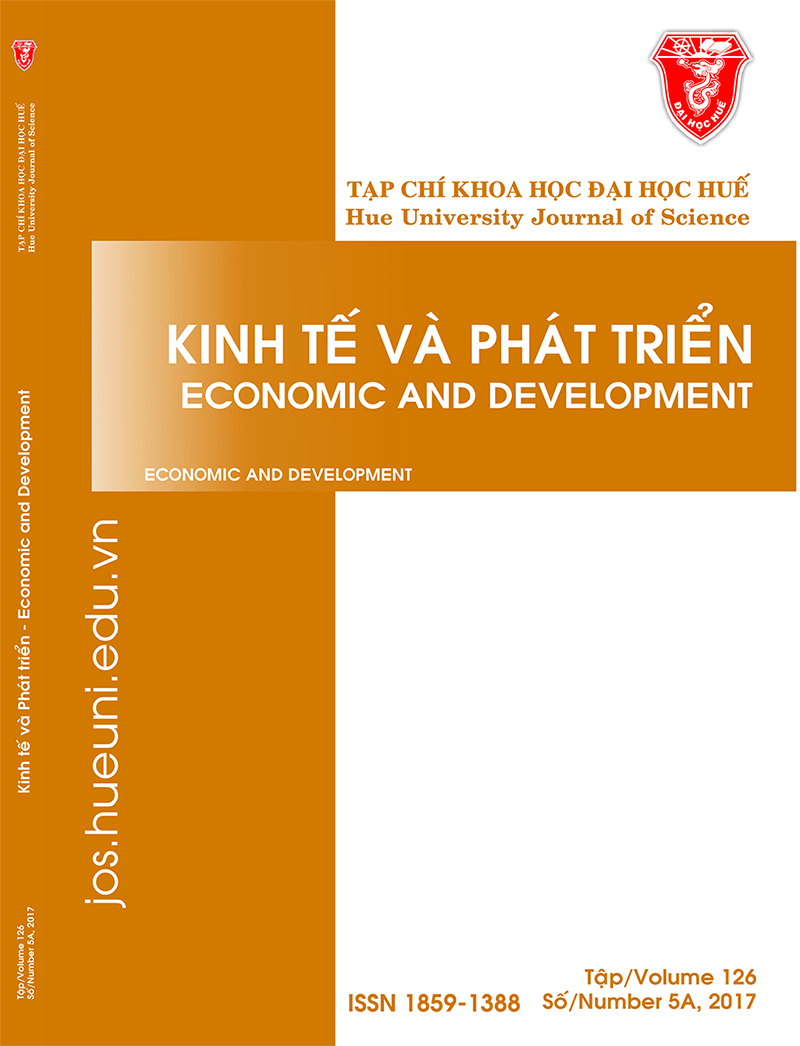Tóm tắt
Tóm tắt: Theo quan điểm trọng dịch vụ, vai trò nhà cung cấp dịch vụ và khách hàng không tách biệt mà tương tác với nhau để trao đổi các giá trị. Khách hàng theo quan điểm này là một phần của quá trình cung cấp dịch vụ, đồng tạo sinh giá trị dịch vụ. Nghiên cứu này xác định tác động của từng yếu tố nguồn lực tương tác của tổ chức và hành vi hướng tới khách hàng của nhân viên đến hành vi tham gia của khách hàng vào quy trình dịch vụ, tại ngân hàng. Một số yếu tố liên quan lần đầu tiên được nghiên cứu như công bằng cảm nhận trong tương tác, mối quan hệ giữa nhân viên với khách hàng, văn hóa tổ chức. Nghiên cứu định lượng thực hiện với 299 khách hàng Vietcombank và Agribank - chi nhánh TP. Hồ Chí Minh và Huế. Kết quả cho thấy một số hành vi hướng tới khách hàng của nhân viên tác động đến hành vi tham gia của khách hàng vào dịch vụ mạnh hơn nguồn lực tương tác của tổ chứcTài liệu tham khảo
- Adelman, M. B., Ahuvia, A. C. (1995), Social support in the service sector the antecedents, processes , and outcomes social support in an introductory service, Journal of Business Research, 32, 273–282.
- Baron, S., Warnaby, G. (2011). Value Co-creation from the consumer perspective: Service systems implementation, Service Science: Research and Innovationsi in The Service Economy, Springer, 199-210.
- Beatson, A., Lings. I., Gudergan, S. P. (2008), Service staff attitudes, organizational practices and performance drivers. Journal of Management & Organization, 14(2), 168-179
- Blodgett, J. G., Hill, D. J., Tax, S. S. (1997), The effects of distributive, procedural, and interactional justice on postcomplaint behavior, Journal of Retailing, 73(2), 185-210
- Bowers, M. R., Martin, C. L. (2007), Trading places redux: employees as customers, customers as employees, Journal of Services Marketing, 21(2), 88–98.
- Cropanzano, R., Rupp, D. E., Mohler, C. J., Schminke, M. (2001), Three roads to organizational justice. In G. R. Ferris (Ed.), Research In Personnel and Human Resources Management (20, 1-113), New York: JAI Press.
- Eiglier, P. (2004), Marketing et stratégie des services, Paris, Economica, 1ère éd.
- Hồ Hoàng Diệu, Phạm Ngọc Thúy (2015), Nguồn lực tương tác, hành vi hướng tới người học và vai trò đồng tạo sinh giá trị của học viên trong dịch vụ đào tạo, Tạp Chí Khoa Học Trường Đại Học Mở TP. HCM, 2(41), 81-91
- Hocutt, M. A., Chakraborty, G., Mowen, J. C. (1997). The impact of perceived justice on customer satisfaction and intention to complain in a service recovery. In Brucks, M., & MacInnis, D. J. (Eds.), Advances in Consumer Research (5, 457-463). Ann Arbor, MI: Association for Consumer Research.
- Keh, H. T., Teo, C. W. (2001), Retail customers as partial employees in service provision: a conceptual framework. International Journal of Retail & Distribution Management, 29(8), 370–378.
- Lanjananda, P., Patterson, P. G. (2009), Market orientation: the construct, research propositions, and managerial implications. Journal of Marketing, 54(2), 1-18.
- Lengnick-Hall, C. A., Claycomb, V. (2000), From recipient to contributor: examining customer roles and experienced outcomes, European Journal of Marketing, 34(3/4), 359–383.
- Mechinda, P., Patterson, P. G. (2011), The impact of service climate and service provider personality on employee’s customer-oriented behavior in a high-contact setting, Journal of Service Marketing, 25(2), 101-113.
- Mills, P. K., Morris, J. H. (1986), Clients as “partial” employees of service organizations: role development in client participation, The Academy of Management Review, 11(4), 726–735.
- Mustak, M., Jaakkola, E., Halinen, A. (2013), Customer participation and value creation: a systematic review and research implications, Managing Service Quality, 23(4), 341-359.
- Ngo, V. L., O’Cass, A. (2009), Creating value offerings via operant resource-based compabilities, Industrial Marketing Management, 38(1), 45-59.
- Nguyễn Văn Tuấn, Lê Nguyễn Hậu (2016), Vai Trò Của Định Hướng Dịch Vụ Của Tổ Chức Đối Với Hành Vi Của Nhân Viên Trực Tiếp Và Sự Tham Gia Của Khách Hàng, Tạp chí Khoa học & Công nghệ, ĐHQG TP. Hồ Chí Minh, 19(Q2) (sẽ sớm xuất bản bản giấy).
- Oliver, R. L., Swan, J. E. (1989), Consumer perceptions of interpersonal equity and satisfaction in transaction: a field survey approach, Journal of Marketing, 53, 21-35.
- Olsen O. S., Mai H. T. X. (2013), Consumer participation: the case of home meal preparation, Psychology Marketing, 30(1), 1–11
- Paternoster, R., Brame, R., Mazerolle, P., Piquero, A. (1998), Using the correct statistical test for the equality of regression coefficients, Criminology, 36(4), 859-866.
- Saura, I. G., Contrí, G. B., Taulet, A. G., Vel á zuqez, B. M. (2005), Relationships among customer orientation, Service orientation and job satisfaction in financial services, International Journal of Service Industry Management, 16(5), 497-525.
- Saxe, R., Weitz, B. A. (1982), The SOCO scale: a measure of the customer orientation of saleperson, Journal of Marketing Research, 19(3), 343-351
- Seo, Y. (2012), Cultural Impact on Customer Satisfaction and Service Quality Evaluation in Hotels, UNLV Theses/Dissertations/Professional Papers/Capstones. Paper 1370.
- Shostack, G. L. (1977), Breaking free from product marketing, Journal of Marketing, 41(2), 73–80
- Vargo, S. L., Lusch, R. F. (2004), Evolving to a new dominant logic for marketing, Journal of Marketing, 68(10), 1-17.
- Yi, Y., Gong, T. (2011), Customer value co-creation behavior: scale development and validation, Journal of Business Research, 66(9), 1279-1284.
